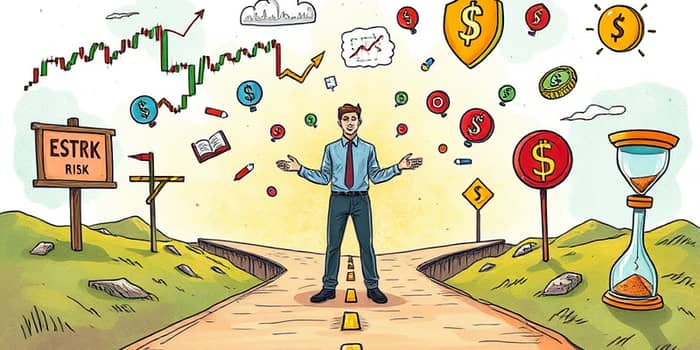
In the ever-evolving landscape of finance, risk is a constant companion. Whether you’re a seasoned professional or just beginning your journey, grasping core risk concepts is essential to charting a path toward financial success.
By learning to identify, measure, and manage various forms of risk, you gain the clarity needed to make decisions that align with your goals and values.
Investment risk refers to the potential for losing some or all of the original investment or for returns to differ from expectations. Every asset carries inherent uncertainties, and acknowledging this truth allows you to build strategies that address them effectively.
From market fluctuations to company-specific events, understanding the nature of risk empowers you to navigate complexity with confidence.
Risks in the investment world come in many shapes and sizes. Recognizing each type helps you design a portfolio that can weather different storms.
To make informed choices, it’s vital to quantify and qualify the risks you bear. A blend of data-driven analysis and contextual understanding yields the most reliable insights.
Key tools include risk tolerance questionnaires, portfolio analytics, Monte Carlo simulations, and stress testing frameworks. These methods reveal the potential range of outcomes under varied conditions.
Risk tolerance is your unique blend of financial capacity and emotional comfort with uncertainty. It evolves with age, experience, time horizon, and personal objectives.
Tools like interactive quizzes and interviews help you evaluate both objective factors and subjective responses. Knowing your profile prevents decisions driven by panic or overconfidence.
Effective risk management transforms uncertainty into opportunity. By adopting robust techniques, you can pursue growth while protecting capital.
Regulators emphasize thorough risk disclosures, proper asset allocation, and ongoing education. Compliance ensures transparency and protects investors.
Behavioral risks—such as herding, loss aversion, and overconfidence—can undermine logical strategies. Cultivating awareness of these tendencies helps you maintain discipline during market swings.
Consider an investor heavily concentrated in a single technology stock. When that company faces regulatory scrutiny, the portfolio plunges. This scenario underlines the value of diversification across sectors.
In another case, a retiree using Monte Carlo simulations discovers a significant chance of running out of funds before age 85. By adjusting the withdrawal rate and incorporating more conservative assets, the retiree secures a more reliable income stream.
Finally, a young professional who panicked during a market dip sold at the bottom. After taking a risk tolerance quiz, they learned to stay invested and ride out volatility, resulting in stronger long-term returns.
Even experienced investors can fall prey to errors. Awareness of these missteps is the first step to avoiding them.
Your investment journey is dynamic. Life events—such as retirement, buying a home, or education funding—shift your risk tolerance and goals.
Historical market events, from the 2008 financial crisis to the COVID-19 crash, remind us that adaptability and preparation are key. Embracing a long-term perspective helps you stay the course through inevitable upheavals.
Conclusion: Navigating investment risk is both an art and a science. By combining rigorous analysis with self-awareness and disciplined strategies, you can turn uncertainty into a powerful catalyst for growth. Let this guide inspire you to take control of your financial future, armed with the knowledge and tools to make informed, confident decisions.
References





